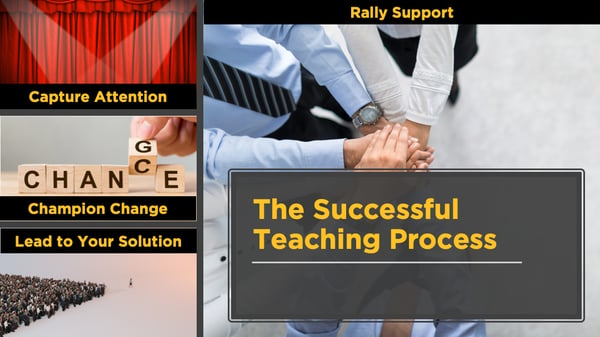 For the last decade, selling organizations have been nearly paralyzed because of research from CEB (now Gartner CEB) that highlighted that, due to a variety of factors, buyers were 57% through their journey before they were open to engaging with salespeople.
For the last decade, selling organizations have been nearly paralyzed because of research from CEB (now Gartner CEB) that highlighted that, due to a variety of factors, buyers were 57% through their journey before they were open to engaging with salespeople.
While sales leaders, reps, and demand generation teams have paid lip service to strategies and tactics designed to address this challenge, the reality is that they have, for all practical purposes, abandoned the early stages of the sales process and pushed harder and harder to the post-intent, high-inclination-to-buy late-journey stage. Demand Generation has become a buzzword as tactics rapidly shift to demand capture. And while demand is high and the economy is red-hot, the cost of this shift isn’t being felt (and in many ways, companies are experiencing positive reinforcement for activities that thrust them further into the commoditization trap).
I have never disputed the virtual revolution in buy-side behavior but, for as long as I’ve been in business, I’ve vigorously argued that the cause of this change was driven primarily because of a lack of value creation generated by sales and marketing in the early phases of a decision or purchase, and not because of some innate desire on the part of buyers to do away with salespeople.
Today, I’m happy to share, that I now have the data to back up my claim. A just-released research report from The Aberdeen Group, Demystifying B2B Purchase Intent Data shows that buyers are not only not avoiding sales reps at the beginning of the buying process - they are desperately looking for professionals who actually create value. Here are some of the highlights:
- 50% of those involved in B2B purchases say they have incomplete, unclear or poorly defined criteria surrounding the business need they are addressing.
- 73% of B2B buyers are more willing to speak with a vendor “earlier than usual in the consideration process” if:
- They can help me define my problems and needs
- They tell me something I didn’t know about the category of my competitors
- They provide me with objective information and help me frame my decision
- They challenge my way of doing business by highlighting a pain point or organizations need we weren’t aware of
- 33% of B2B buyers will favor a vendor that “shows me a new way of solving an established problem”
- 66% of B2B buyers say that vendors that have taken such an approach have enabled them to shorten the purchasing/decision/sales cycle
It turns out that one of the major reasons that buyers are doing more on their own is
because of the seller.
The Focus on Thought Leadership May Generate Clicks, But It Doesn’t Influence Buyer Behavior
For years, content marketers have been focused on creating thought leadership and thought leadership is a large part of the cause. Think about it, you’re generating content — blog, emails, collateral, videos, podcasts, white papers —and you’re teaching our salespeople to present, run better demos and have better conversations. All of this is content, built around the idea of generating thought leadership.
I think that most people would agree with me that the following five points meet the criteria they have for creating “good” content:
- Well written
- Authoritative
- Interesting
- Easy to understand
- Represents a smart or expert perspective
We want people to see our content and think, “these guys know what they're doing; they’re smart.” The idea behind this is that when someone realizes they need something because they were exposed to our thought leadership and realize how smart we are, they’ll want to work with us (or at least talk to us).
Theoretically, it should work, but it doesn't. Why?
Thought leadership doesn't cause people to change their course or speed. While thought leadership may lead to more traffic, more time per page, and even more downloads; if you are not influencing them to think differently, then your prospect is not going to change what they’re doing, and if they don't change course or speed, then if they're not buying from you, they are probably not going to buy from you.
When we look at what type of content actually drives change, it's a very different type of content. What we call Point-of-View Insights.

Point-of-view insights are frame-breaking insights that change how the person you're communicating with thinks about their situation. They change their mindset and mental maps. Insights are designed to upend the status quo.
Make no mistake - insights politely but explicitly teach the customer why they're wrong. I get that's not really the socially acceptable thing to do. We don't want to make the customer feel stupid (that’s the polite part) but if you're not teaching your prospects why they’re wrong, then you are not generating relevancy. Implicit in every good insight is the idea: “Hey, you're wrong. Hey, you're doing it wrong. Hey, you need to think about it differently.” Thought leadership is about you, the seller; insights are about me, the buyer.
If you give me an insight and I walk away thinking, “Wow, I might be wrong about this. Wow, I need to think about this differently,” that will stimulate a change in course, speed or, more likely, both.
How does this impact your content strategy? All of your content should be tied in some way to the key point-of-view insights you’ve developed. We typically recommend having about three to five core insights.
This approach enables you to utilize the thought leadership you’ve developed in a way that generates action and creates a greater need. It will put you in a strong leadership position to enable your customer to eliminate the barriers to good decisions before you have them. You’ll be more relevant in your chosen markets, and you’ll initiate meaningful conversations well before your competitors even know there’s an opportunity emerging.

 Doug Davidoff
Doug Davidoff